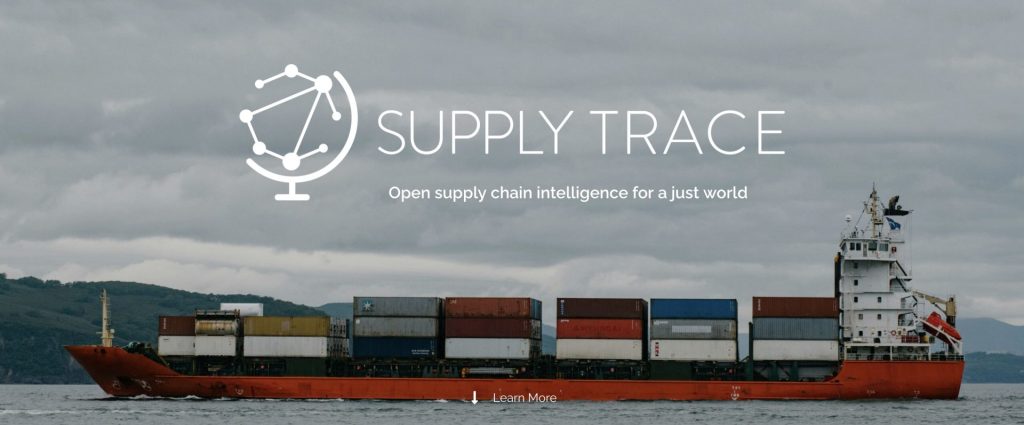Check Out This Open Platform to Help Shippers Avoid Forced Labor in Supply Chain
You wouldn’t endorse slavery. And you wouldn’t use forced labor to make your goods. However, some of you reading this blog probably have had forced labor hidden within your supply chain at some point without even knowing it. A new open source platform called Supply Trace can help shippers avoid sourcing from companies that utilize forced labor.
The platform is particularly focused on China, where there is a major problem in the forced labor of Uyghur people, who are arbitrarily detained by the Chinese government.
According to the U.S. Department of Labor (DOL), more than a million Uyghurs and other mostly Muslim minorities in China’s far western Xinjiang Uyghur Autonomous Region have been arbitrarily detained by the People’s Republic of China. The DOL goes on to share:
(1) It is estimated that 100,000 Uyghurs and other ethnic minority ex-detainees in China may be working in conditions of forced labor following detention in re-education camps. (2) Many more rural poor workers also may experience coercion without detention.
Current estimates of Uyghurs in forced labor in China actually tend to start at 100,000 people and soar to several hundred thousand. Figuring out exactly how many people work under forced labor in China is difficult. China’s government obviously plays an active role in the forced labor and isn’t exactly known for being forthcoming.

Lack of transparency is also a problem within supply chains. Traditionally, it has been next to impossible to trace where sources of goods source goods or raw materials themselves and where their sources source from, and so on, and so on. That’s where the Supply Trace platform comes in. Shippers and consumers could use it to trace companies’ supply chains in order to avoid unwittingly supporting the use of forced labor.
Neither myself nor Universal Cargo were paid or even contacted to share Supply Trace. I came across an interview and short article in Supply Chain Brain that caught my attention. The headline used the provocative question, “Can We Finally Put a Stop to Forced Labor in China?”
The U.S. government has been trying to fight forced labor in China with the Uyghur Forced Labor Prevention Act Entity List restricting imports from companies it finds to be connected to the forced labor in the Xinjiang region. Just a week ago, five more Chinese companies were added to the list, as reported by Karen Freifeld in a Reuters article.
Still, these company sanctions by the U.S. are far from ending forced labor in China. It would be nice if something actually could, so I checked out the interview.
In the interview, Shawn Bhimani, assistant professor of supply chain and information management at Northeastern University, was introducing Supply Trace as, the way Supply Chain Brain put it, “a new tool for exposing risks to importers posed by forced labor and other human right violations in extended supply chains.”
When it comes to extended supply chains, things can quickly get complicated. When consumers at stores pick up products with labels saying they were made in countries other than China, the consumers have no guarantee they’re holding products that weren’t produced in part by forced labor in China. Bhimani gets into that a little bit in the interview. Cotton produced under forced labor in western Xinjiang could be used in production of apparel made in places like Sri Lanka or Indonesia.
We’re a long way from stopping the forced labor that happens in China. However, a platform to track supply chains offers a great deal of potential to fight that forced labor. At the very least, consumers and shippers can utilize it to reduce the risk of forced labor being hidden in their supply chains.
Here’s some good information Supply Chain Brain’s article gave on Supply Trace:
Bhimani is a principal investor and project lead at Supply Trace, a new open platform that was designed to allow companies to assess the risk of human rights violations throughout global supply chains. It analyzes more than 400 million data points, including detailed information on imports to the U.S. as well as intelligence from trained investigators. Users of the platform can call up specific companies, factories or product types (based on the Harmonized System code) to understand where the biggest risks are.
Supply Trace has been launched a pilot focusing specifically on Xinxiang Province, with an emphasis on cotton production, but will be expanded by product type and location within the next year. Currently it’s accessing information on some 17,000 facilities linked to reports of worker oppression, and will soon increase that number to 25,000. “The goal long-term is to be able to trace supply chains in total,” Bhimani says.
Click here to check out Supply Trace and its mission at its website.





